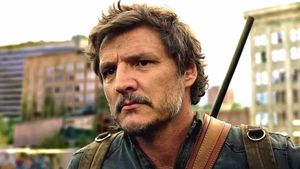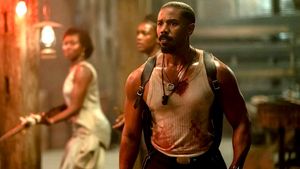There are copies of The New York Times all over George Takei and husband Brad’s otherwise meticulous L.A. home. The reading material is a testament to the husbands’ deep interest in current events and constitutes a large chunk of their morning routine, which includes several cups of green tea and walks around their leafy Hancock Park neighborhood (Will & Grace star Sean Hayes is a neighbor).
Keep up with the latest in LGBTQ+ news and politics. Sign up for The Advocate's email newsletter.
Being in their presence, it’s easy to see the connection between the two men, who first partnered up 38 years ago. “We still get a kick out of each other,” George says. “Yeah, a kick in the rear,” Brad retorts before both guffaw.
They credit part of their longevity together to similar worldviews. “There’s just not a [political] issue that we don’t naturally agree,” Brad says. “When we walk out our front door we’re always in sync about this crazy world.”
On the December day The Advocate visited their home, the husbands were preparing for George’s cataract surgery the next day, which seemed to weigh more on Brad than 86-year-old George. Brad, at 69, has long been the TV legend’s minder, even when he worked as a journalist in their courting days.
 Luke Fontana
Luke Fontana
 Luke Fontana
Luke Fontana
“[Brad is] very organized, a great planner, he goes into all the details and I’m slovenly and totally a mess,” George says. When they first got together, Brad found an unused washer and dryer in George’s townhouse; he soon realized why it collected dust. “George and I got together when he was 48 — and until he was 48, his mother did his laundry,” Brad says. “Then Brad took it on,” George adds.
Brad soon learned that his future mother-in-law’s habit of washing her son’s clothes and darning his socks wasn’t just a case of George’s failure to launch.
“I grew up behind barbed wire,” says George, whose Japanese-American family spent three years in internment camps during World War II. “We had all the privation. My mother loved cooking and they took that away from her. Everything that we loved; our home, my father’s business, they took away. So she reveled in being a mother again.”
George’s time in the camps, from age 5 to 8, is on his mind again. A musical based on his family’s internment, Allegiance, played in London, L.A., and Broadway before COVID, and he recently completed his second illustrated book on his childhood, My Lost Freedom, due for release April 30. George still revels about his father’s resilience during that time, serving as a block captain at two of the three camps his family was sentenced to simply for having Japanese heritage. The elder Takei, Takekuma Norman Takei, became an advocate for the people around him, many of whom were experiencing the loss of homes, businesses, self-worth, and freedom.
 Luke Fontana
Luke Fontana
 Luke Fontana
Luke Fontana
 Luke Fontana
Luke Fontana
“[My father] knew we had to be a community together rather than each despairing in our own private misery,” George says. “He didn’t want his kids to be victimized by that sense of inferiority or despair or their parent’s silence.”
Takeuma was an extraordinary person, instilling a love of civics and activism in his son; a visit to a campaign office for 1952 Democratic presidential candidate Adlai Stevenson was a formative moment for young George. Still, the acting bug couldn’t be denied. George landed many of the very limited roles 1950s and ’60s television offered Asian actors. Then, in 1966, he walked into an interview with TV writer and producer Gene Roddenberry for a new show he was developing — Star Trek.
“We [initially] just talked about current events; Vietnam War, civil rights. We talked about movies and books; he was seeing what kind of person he was interviewing,” George said of Roddenberry. “He felt television was being wasted. It was full of cops and robbers, westerns, comedy shows, game shows, when we’re surrounded by all this substantive drama around us [in the real world]. He found a way to deal with this…. The whole of Earth will be represented by a spaceship and depict the diversity of our planet as a strength and a source of joy and vitality.”
 Luke Fontana
Luke Fontana
 Luke Fontana
Luke Fontana
George’s astrophysicist character Hikaru Kato Sulu appeared in 52 episodes of the iconic original series, followed by several spin-off series and many of the successful films.
“I feel blessed,” George says, beaming with pride over the series’ continued influence and reverence. It was during Star Trek’s run as cinema gold in the 1980s that George met Brad through Frontrunners, an LGBTQ+ running club. They committed quickly even though were both closeted at work; something they say was standard practice 40 years ago.
“George knew his career would be over if he came out as a gay man,” Brad says. “We lived professionally closeted — we had our gay Frontrunner friends, and our relatives knew we were gay — and if you knew us in those years you would think we were openly gay. But if George did an interview he would talk around it. “I haven’t found the right person yet,” he’d say.
Brad remains blasé about the delicate dance.
“That’s how you played the game,” he says. “I was a newspaper reporter, magazine writer, and at my publication I was in the closet too. It’s just what you did. I didn’t feel like he must not really love me.”
George would eventually come out in 2005. “That’s when I became the significant other, the longtime companion, the boyfriend, the lover,” Brad says, “but I wasn’t the husband until 2008.”
 Luke Fontana
Luke Fontana
Being outed was a worry for the couple in the intervening two decades between meeting and coming out, but HIV weighed much more heavily.
“The peak of AIDS was hitting at that time,” Brad says of the time they met. “The conversations with your gay brothers and sisters would be, ‘Have you tested negative?’ George and I both were in our relationship before we knew our antibody status; in other words, we practiced safe sex because there was no way to know if you had the virus or not. Finally, we tested and were both negative and it was such a relief. And then our relationship deepened after that.”
George relays a story of visiting his HIV-positive friend, Randy, in the hospital, describing his room as little more than a broom closet. “He was shivering and in a fetal position,” as the nurses stood outside chatting. George screamed at them to get him a blanket. “I was raging,” he says.
“Dozens of our friends passed away during that time period,” Brad says. “The fact that we’re still alive is a blessing, because why didn’t I test positive? I was sexually active with multiple partners [before meeting George]. Luck.”
Monogamy has worked for the couple ever since.
“I think because we cemented our bond during the era of AIDS, that we always established sexual fidelity as one of the guideposts for our relationship and we’ve been very happy in that category,” Brad says, emphasizing that this works for them. “Certainly, to judge other people for what their choices are is not something that we do.”
Pictures of George and Brad’s nieces and nephews cover their house. They always wanted children, but Brad says they fell victim to group-think of the ’80s and ’90s. “This was a common sentiment in those years: it wouldn’t be fair to the children because we’re two men living together and it would be hard on the children,” Brad says.
Kids or not, George and Brad know they’ll leave behind a legacy as a high-profile gay couple never afraid to speak out against homophobia and racism.
“We’ve been to two White House State Dinners, invited by the Obamas,” Brad says. “We sat at the head table next to the Pelosis and the Abes [the first family of Japan at the time]. We were invited as husband and husband to the White House. They elevated us to the head table, which was amazing.”
Brad looks at his husband, contemplating George’s long journey that he’s been part of for nearly half his life: “From behind barbed wire to the State Dinner.”
---
Photography by Luke Fontana
Stylist Benjamin Holtrop
Grooming Claire Magnus
Videographer Miguel Torres
Location Takei residence
 Luke Fontana
Luke Fontana


 Luke Fontana
Luke Fontana Luke Fontana
Luke Fontana Luke Fontana
Luke Fontana Luke Fontana
Luke Fontana Luke Fontana
Luke Fontana Luke Fontana
Luke Fontana Luke Fontana
Luke Fontana Luke Fontana
Luke Fontana Luke Fontana
Luke Fontana












































































